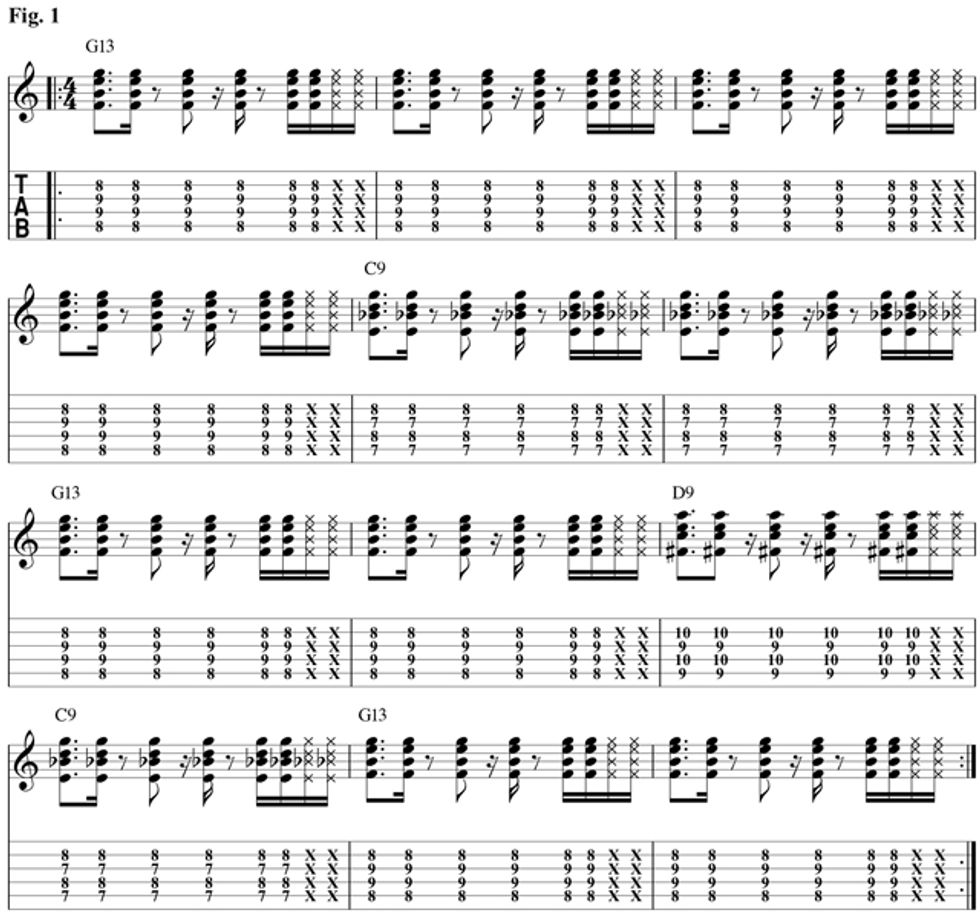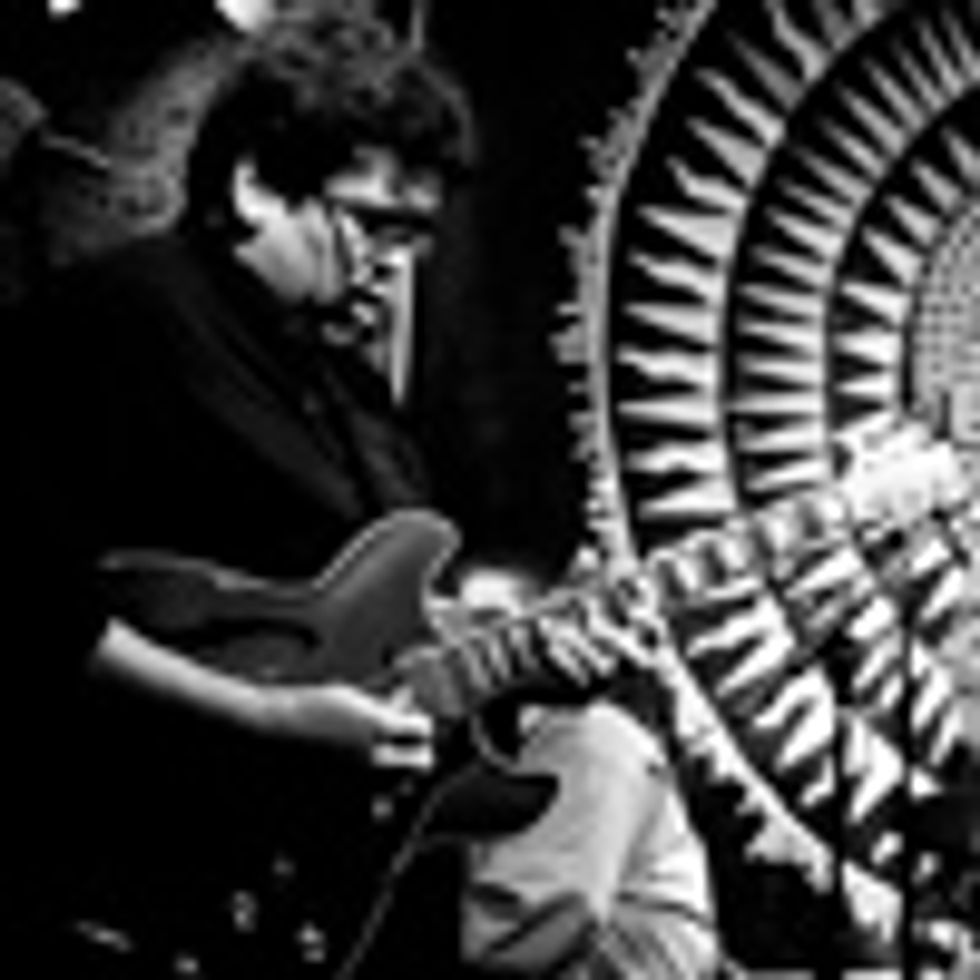Chops: Intermediate
Theory: Intermediate
Lesson Overview:
• Learn new voicings for dominant 9th and dominant 13th chords.
• Understand the basics of voice leading over a blues progression.
• Play funky shuffle rhythms in the style of James Brown.
Click here to download a printable PDF of this lesson's notation.
This month we’re going to continue to look at 9th chords and check out some cool voice-leading tricks to use over a blues progression. Voice leading is when you move as few notes as possible when moving from one chord to another. We’ll also take a look at a cool rhythmic idea where I move an inner voice of the chord up and down to create a tension and release. Lastly, we’ll play a cool funky shuffle where we’ll move the chord up and down by half-steps to create tension and release.
We use a basic blues progression in the key of G for Fig. 1. The first voicing is actually a G13 with the root on the 2nd string and the 13th (or 6th) on the 3rd string. This makes for a slightly “jazzier” sound. We will use this shape for our I chord and the voicing from last month’s column for the IV and V chords, also known as the “T-Bone” chord, where we omit the root.

Let’s take a look at how each note changes when moving from the I chord to the IV chord. The top note (G) stays the same while the B and F move down a half-step and the D moves down a whole-step. Every note in the I chord only moves when necessary and then to the nearest chord tone of the next chord, usually a half-step or whole-step away. This economical approach to chords might be mentally taxing in the beginning, but will pay off in the long run. Every time you think about using these voicings, take a second to review the voice leading first.
After listening to some of Robben Ford’s albums, I picked up a cool rhythmic idea that you can check out in Fig. 2. Robben will take a 9th chord voicing, like the one we learned last month, and move the fifth up and down chromatically from E down to C#. We’ll do this with a one-chord vamp on A9. Now this will take a little time to develop, so go slowly at first and speed up the tempo as you get more comfortable. The hardest part is to develop the finger movements. Use your first finger to make all the slide movements on the second string except for when we return to the original chord voicing of A9.

Fig. 3 is the style of a funky shuffle, not unlike what you might hear from James Brown. The rhythm takes a one-chord groove with a D9 and adds accents with chords that are a half-step away. The first one occurs at the end of the first measure with a C#9 chord, and the second lands on beat 4 of the second measure with a D#9. The bass player sticks on D, even though the chords are changing. This causes tension that then releases when the chord returns to D9. This can be used on a funky blues or static vamp. I would typically use this technique sparingly.

I truly hope you enjoy these newfound rhythmic ideas. I know that these make a big part of my rhythmic vocabulary. Some of these will take time to learn, so go slowly and build up your comfort level. Others might take sometime to figure out where they’ll work in your repertoire. I believe they’ll make a great addition to your playing.
 Dennis McCumber has been a guitar instructor and performer
for more than 20 years. He holds a Bachelor’s degree in music
education from The College of Saint Rose.
Dennis performs
regularly in the New York City area with various rock, blues, and funk bands, and occasionally as a classical soloist.
In addition to performing, Dennis has been a middle school
music teacher in the Bronx for the past 12 years. While
teaching in the Bronx, he was given a guitar lab by VH1
Save the Music and a keyboard lab from the radio station
Hot97 Hip Hop Symphony. Dennis has been an instructor at
the National Guitar Workshop since 1996, where he teaches
Blues, Funk, and Rock. Find out more at dennismccumber.com.
Dennis McCumber has been a guitar instructor and performer
for more than 20 years. He holds a Bachelor’s degree in music
education from The College of Saint Rose.
Dennis performs
regularly in the New York City area with various rock, blues, and funk bands, and occasionally as a classical soloist.
In addition to performing, Dennis has been a middle school
music teacher in the Bronx for the past 12 years. While
teaching in the Bronx, he was given a guitar lab by VH1
Save the Music and a keyboard lab from the radio station
Hot97 Hip Hop Symphony. Dennis has been an instructor at
the National Guitar Workshop since 1996, where he teaches
Blues, Funk, and Rock. Find out more at dennismccumber.com.
























